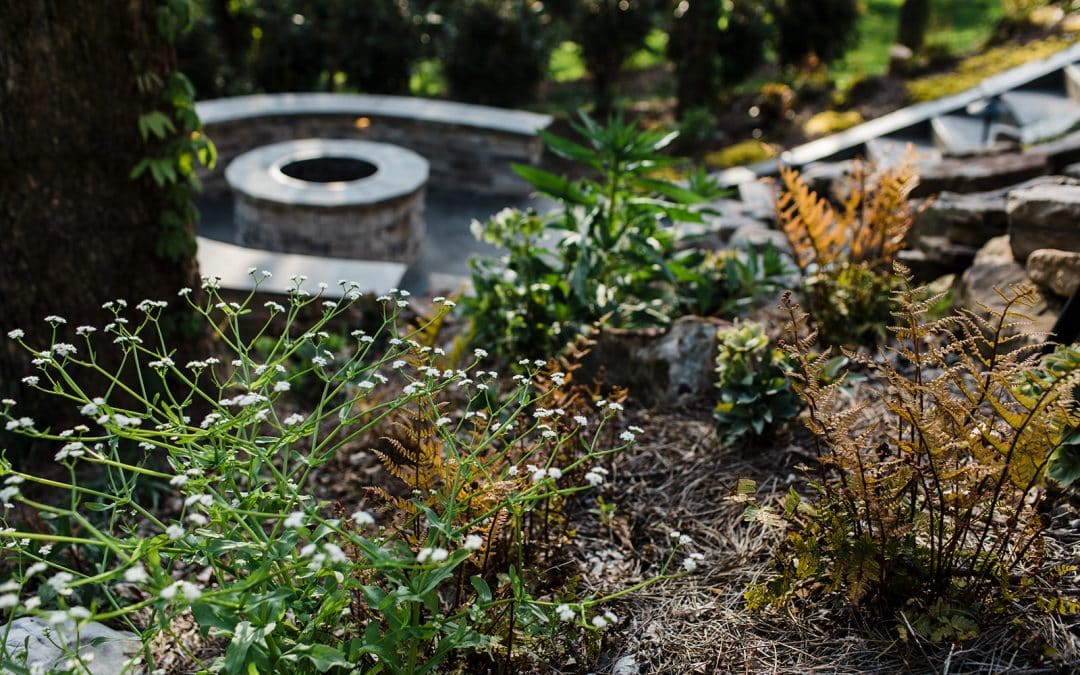
by Gardens of Babylon | Apr 23, 2025
As spring rolls into summer, your patio comes into the limelight. It can be a place to hang out with friends and family, or it can become a quiet getaway in an outdoor setting, the central point of your private backyard oasis.
“It can be your own personal escape,” says Eric VanGrinsven, a landscape designer with the Gardens of Babylon design team. The designers are skilled in creating unique patio spaces among the hardscape elements as part of an overall landscape design.
We’ve chosen a few to highlight – large, small and in-between – to showcase a variety of patio ideas. All were designed and built by the Gardens of Babylon landscaping teams.
Outdoor room with a view

Designers Ryan Fogarty and Chloe Barrett incorporated a cozy gathering space in this patio overlooking the home’s expansive back yard. This circular design accommodates a crowd with its low wall that can serve as extra seating. Garden beds around a patio can serve to soften the transition between the hardscape and the lawn.
Small upgrade, big impact
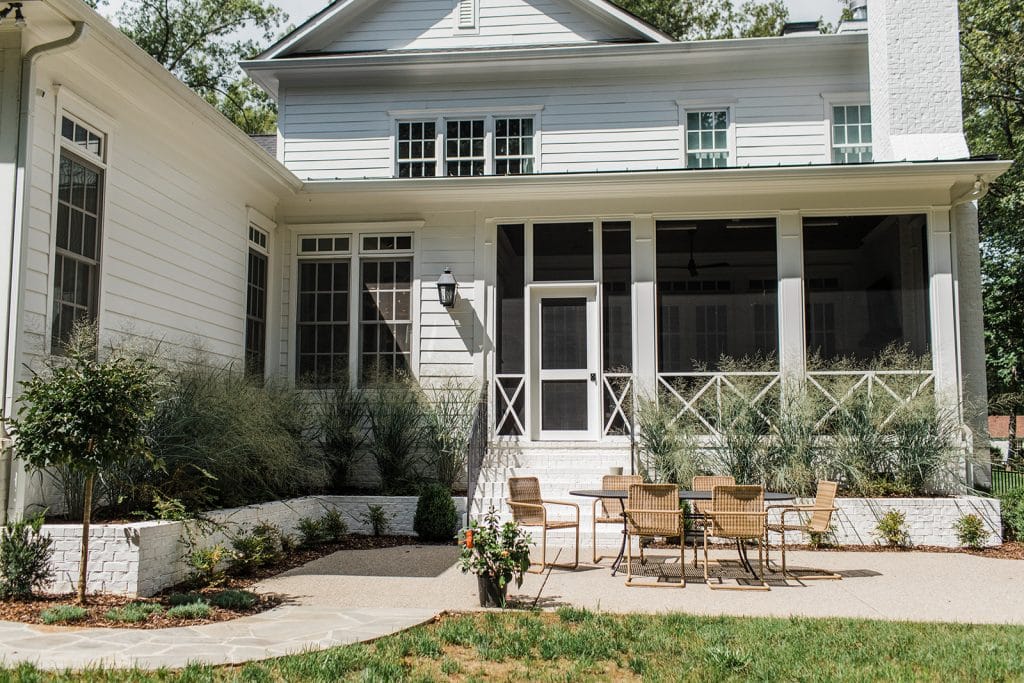
The existing backyard patio in this large yard was given new life with the addition of a flagstone walkway to the driveway, along with raised brick planters to achieve a better sense of scale, says designer Ryan Fogarty. “It completely changed the whole look,” she says.
Other ideas for big-space patios could include a pergola, custom designed walls, trellises or built-in planters and fountains. Free-standing containers or specimen trees or shrubs around the patio can add to its visual appeal.
Twice as nice
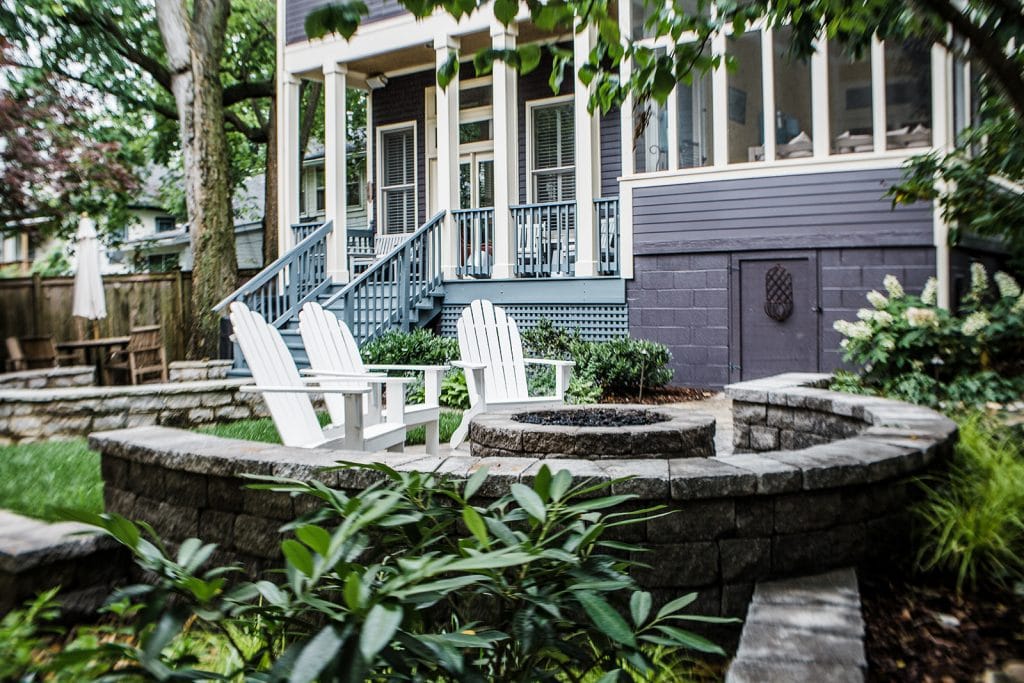
This landscape and patio layout includes two comfortable areas for gathering with friends – one for dining, one for warm conversations around the fire pit. To turn your patio into an outdoor living space, homeowners may also consider an outdoor kitchen, as well – or at minimum, a drop-in grill and three to four feet of counter space, suggests designer Mike Omar.
A small yard with big ideas
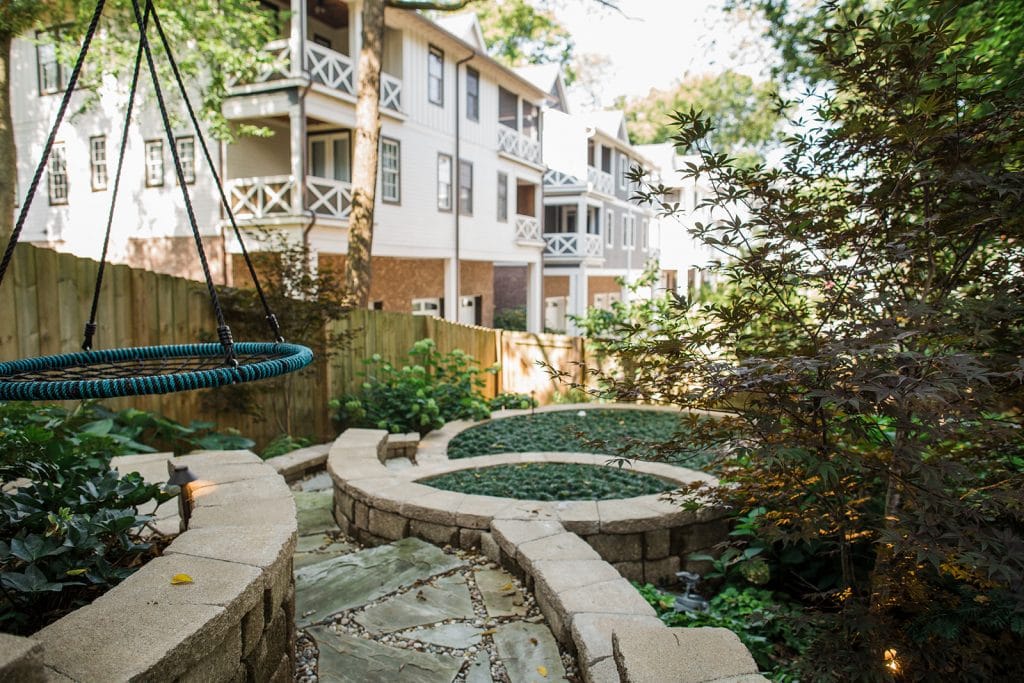
Although this homeowner’s land area is small and sloping, a series of terraced spaces provides all that the homeowners wished for: a seating area, a level lawn space for their dog to play, and shade-tolerant plants for a vibe that is relaxed and natural, says designer Eric VanGrinsven. “The owners wanted to introduce uniqueness and variety, and that’s what they got.”
Other ideas to increase enjoyment on a patio of any size could include an outdoor audio system that’s designed to withstand the rain, cold, dust, sun and other elements; and strategic lighting to light a path or highlight and enhance specific features.
At home in the woods
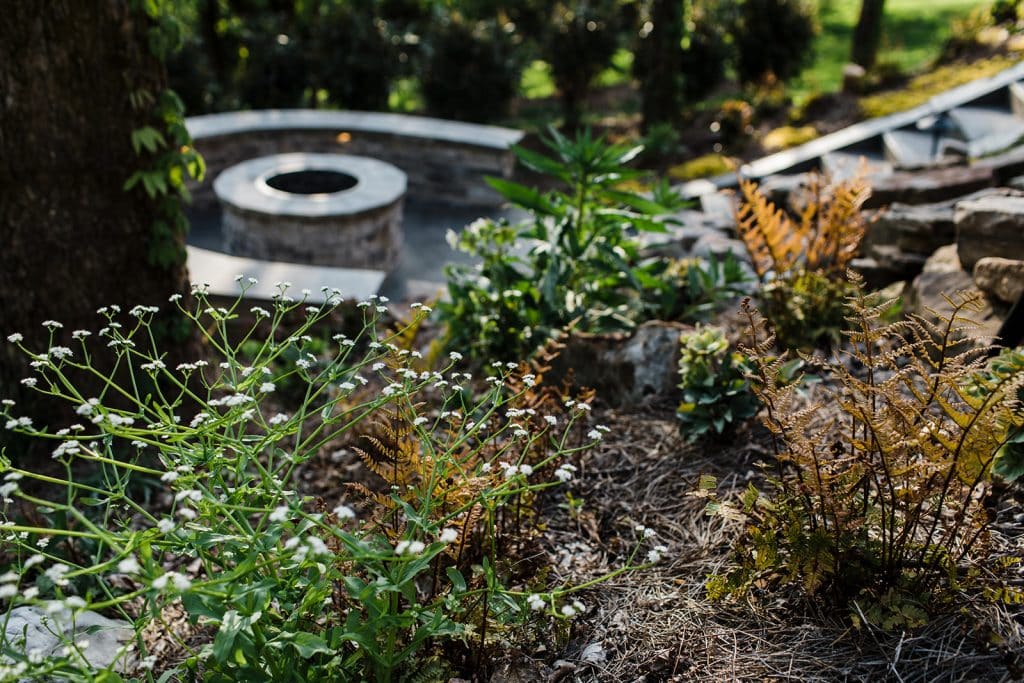
The stone stairs down the steep hillside lead to a private patio under the trees, where a fire pit is the central attraction is this patio designed by Eric VanGrinsven. Requests for wood-burning or gas-fired fire pits built into a design plan have seen an uptick in the past couple of years, says landscape architect Ryan Fogarty. Style choices run the gamut, from rustic stacked stones to designs that are sleek and modern, or anything in between.
Need to add or upgrade a patio in your landscape? Click here to book a consultation with a member of Gardens of Babylon’s design team.
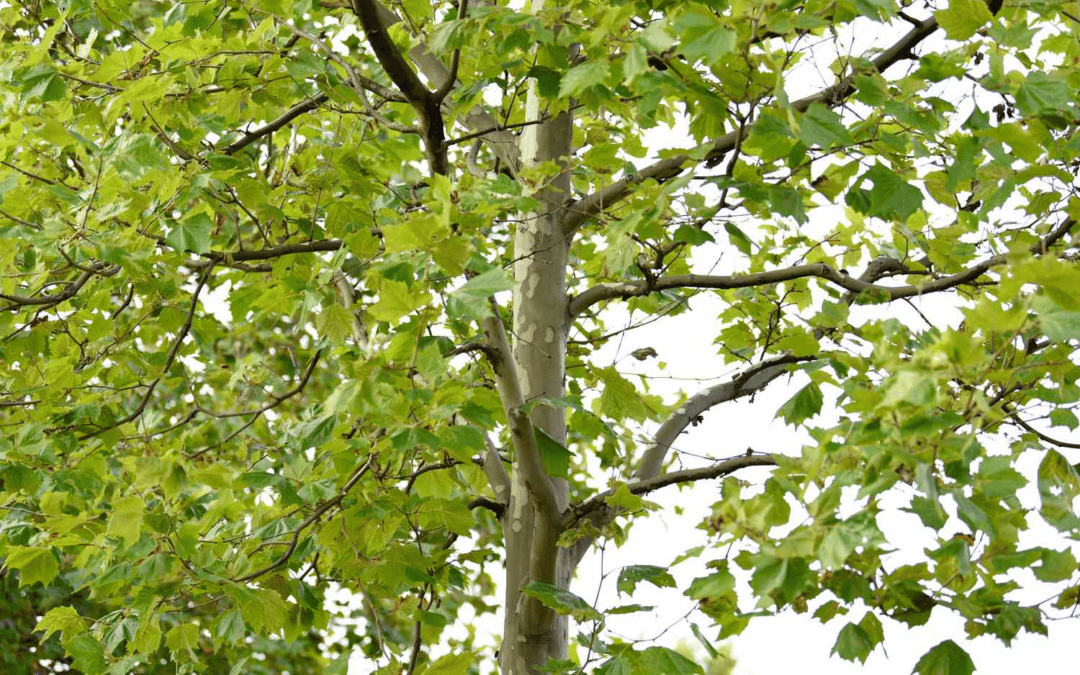
by Gardens of Babylon | Apr 15, 2025
–
Want more trees in your yard, but want to make sure they’re natives? Here are seven native trees to have in your yard:
–
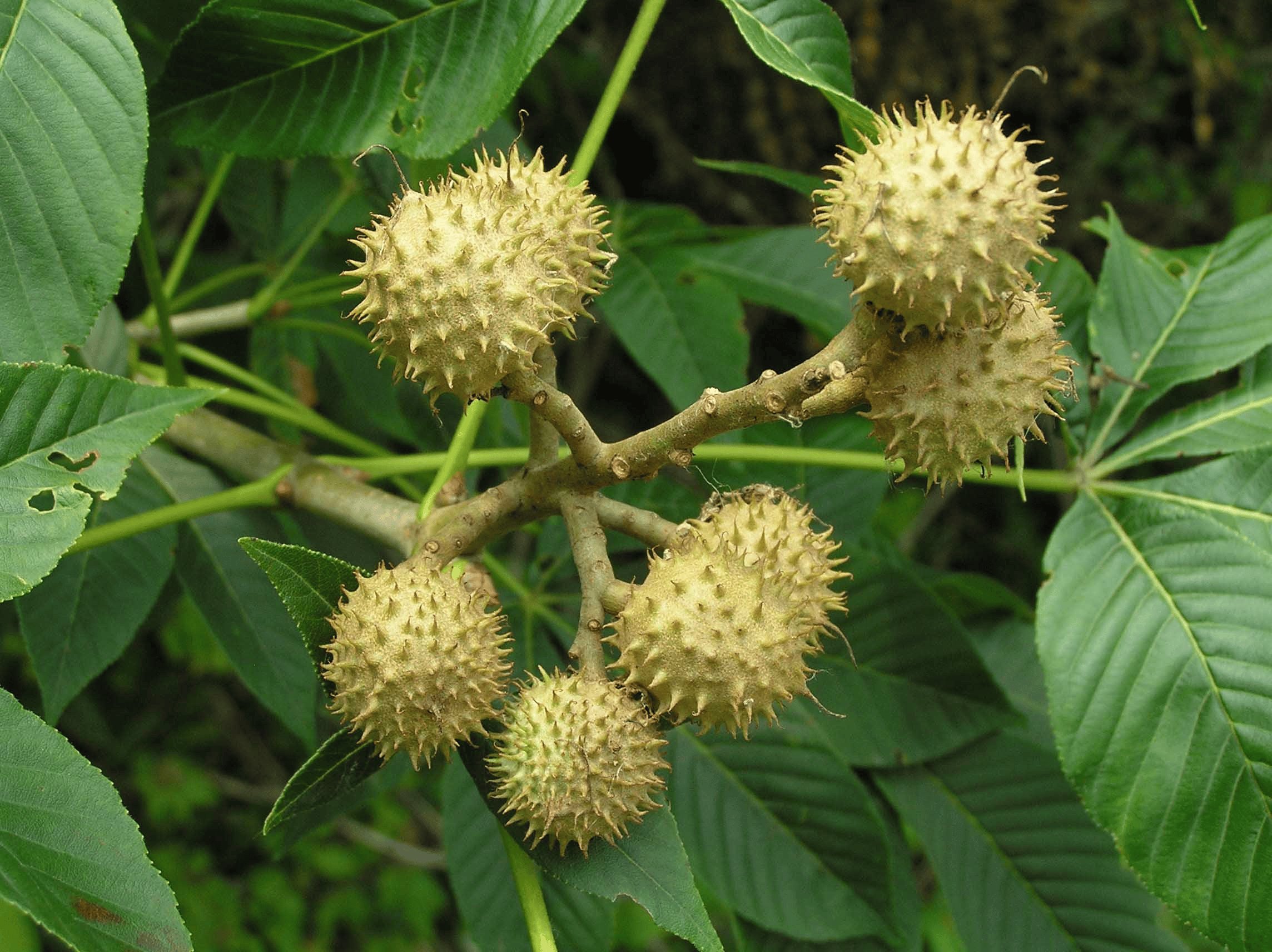
Buckeye
The buckeye tree is a great option for those who love a flowering plant. The buckeye flowers in early spring and produces the well known “buckeye” nut, termed so because it resembles a deer’s eye. However, don’t be fooled by these nuts that also resemble the tasty peanut butter-chocolate dessert! Buckeye nuts are not edible. However, they can be used to plant more buckeye trees. If you do wish to plant more buckeyes from your own seeds, you can expect to collect the nuts once they’ve naturally fallen from your tree, typically in September and October.

Eastern White Pine
If you’re looking for a Christmas tree you can plant in your yard after the holidays, this evergreen might be the one for you. This conifer is one of, if not the largest pine in the United States. At maturity, they can be over 75 feet tall and 2-4 feet wide, so this is a tree for which you want to ensure you have enough space. Make sure the root ball is intact, so this beauty can be planted in your yard (weather permitting) once the Christmas décor has been taken down.
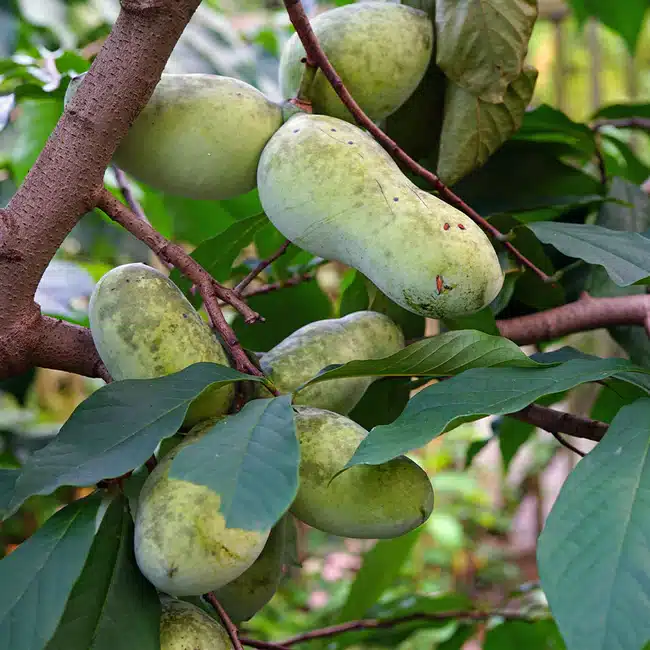
Pawpaw
The pawpaw is part of a mainly-tropical family of plants, so it may come as a surprise to know it is native to the eastern United States! It’s the largest edible fruit native to the U.S., so you’re in for a treat if you own one of these fruit-bearing trees. Pawpaws are not large trees and range from 15 to 30 feet in height, while their trunks average 6-12 inches in width. These trees produce flowers in the early spring before giving way to green leaves, yield ripened fruit (tasting similar to other tropical fruits like mangos and papayas) in late summer through September and October, and have leaves that turn yellow in the fall. Note that more than one pawpaw plant is necessary to produce fruit through cross-pollination.
Persimmon
While most flowering trees shine in spring and summer, this native Tennessean is a true beauty this time of year. The American persimmon tree has leaves that turn a vibrant red-orange in the fall, and it produces a beautiful orange fruit (Go Vols, am I right?) in the fall and winter. Like the pawpaw, these trees need to be planted in pairs, as a male tree and a female tree are necessary in order to yield fruit. Patience is also key with this tree, as it may take several years for them to produce fruit once planted. But, who knows? Perhaps you’ll get lucky with some that produce their little, orange fruit sooner rather than later!


Redbud
If you’re looking for a beautiful pop of color without the size of some other trees, the redbud might be the tree for your landscape. It’s a native tree with rosy pink flowers that appear in April before giving way to reddish-purple leaves that turn green in the summer and then yellow in the autumn. The flowers are also replaced by legumes that ripen in October and can remain on the tree through winter. The seeds from these legumes are typically spread by wind and birds. Redbud trees typically grow 20 feet in height and can have a spread of branches as wide as they are tall, so they can be a great addition to nearly any yard.

Sycamore
This Tennessee native is known as the largest growing tree in the east, and it provides plenty of shade as such. These giants can grow over 70 feet tall and several feet in diameter, so be sure you have plenty of room before planting one. Sycamores are also known for their scaly, grayish bark that reveals a smooth, white underlayer. Their branches yield large, green leaves that turn a yellow-brown color in autumn, hence why they’re exceptional shade trees. Sycamores are hardy and can endure pollution and extreme weather conditions, so they’d fare well and make quite the statement in any yard large enough to house them.

Serviceberry
Known by many names – juneberry, sugarplum, shadbush, etc. – the serviceberry is a large shrub or small tree loved by many, especially the birds. This plant produces fragrant, white flowers in early spring that make way for the berries wildlife enjoy so much. Their berries start small, round and green, but eventually turn red and then purplish-black as they ripen in summer. The serviceberry’s leaves appear in spring as a regular green color, but will turn yellow, orange or red in the fall. The plant averages 15-25 feet tall, depending on how it’s pruned. These plants also tolerate pollution well, so they fare well in urban settings like Nashville.
Have more questions, or need help finding the perfect tree for your yard? Give us a call, or visit our garden center in Nashville!

by Gardens of Babylon | Apr 12, 2025
Vegetable gardening is as old as civilization and in fact, played a huge role in developing modern civilization. Although the techniques and understanding have changed, the goal for growing edible crops remains the same, to provide sustenance. Here’s 6 key elements to having success with vegetable gardening!
1. Solar Exposure/Site selection
Once you’ve selected the perfect location for your veggie garden, it’s essential to get the sunlight right. Most vegetables require a minimum of 6 hours of direct sunlight daily, with 8–12 hours being ideal. Cool-season leafy greens, on the other hand, can thrive with just 4 or more hours of direct light—and will even benefit from some afternoon shade.
As you evaluate your site, consider areas that receive morning, mid-day, and afternoon sun. Before planting, look around and note any trees, buildings, or structures that could cast shade. Keep in mind that in early spring, some trees may not have leaves yet, which could mean more shade later in the season. In addition to sunlight, consider the slope and soil type. Steep slopes can be difficult to work with, lead to erosion, and dry out faster—so choose a relatively level area whenever possible.

2. Soil/Compost/Nutrients
Soil:
In Middle Tennessee, our heavy clay soil can be challenging to garden in. Roots often struggle to move through the dense structure and access necessary oxygen. To improve this, consider adding compost, shredded leaves, aged manure, fertilizer, or even compost tea. These amendments help loosen the soil, enrich it with nutrients, and create a healthier environment for plant growth.
Compost:
Composting is the controlled breakdown of organic matter by microorganisms in the presence of oxygen. The resulting compost enriches the soil by feeding it, improving moisture retention, and introducing a diverse population of beneficial microbes. In fact, just one tablespoon of healthy compost can contain up to 50 billion microorganisms—more than the number of stars in the Milky Way!
Nutrients:
Like all living things, plants require a mix of nutrients to grow strong and healthy. The most important macronutrients are oxygen, hydrogen, and carbon—which plants absorb from air and water—and nitrogen, phosphorus, and potassium (NPK), which are taken from the soil. Nitrogen supports leafy growth and shoot development. Phosphorus aids in overall plant health. Potassium plays a key role in water regulation, root development, and resistance to drought and disease.
These nutrients can be delivered through a variety of commercial fertilizers, including slow-release and liquid forms, available in both synthetic and organic options. Slow-release fertilizers are mixed into the soil and break down over time, while liquid fertilizers are applied with water and typically last 7–14 days.
In addition to macronutrients, plants also need micronutrients—13 of which are considered essential. These include magnesium (Mg), calcium (Ca), and iron (Fe), among others. Some research even suggests that all 92 naturally occurring elements may play a role in plant health. For example, calcium is especially important for tomatoes, eggplants, and peppers; without it, they’re more prone to developing blossom end rot.

3. Primary considerations
Cool vs. Warm Season
In Tennessee, we’re lucky to have two main growing seasons: cool and warm. With the right tools and planning, Middle Tennesseans can grow vegetables year-round. The cool season typically runs from July to May, though most people think of it as the period between September and March. Since many cool-season crops are seeded or harvested outside that window, the actual season stretches longer than expected. Cool-season vegetables include asparagus, arugula, beets, broccoli, cauliflower, carrots, lettuce, and most leafy greens.
The warm season runs roughly from April 15 to October 15, based on our average last and first frost dates. That’s why many gardeners aim to get tomatoes and peppers in the ground around Tax Day. Warm-season veggies are usually planted from February through early July, with longer-maturing varieties like peppers, tomatoes, and eggplant often started indoors 6–12 weeks before the last frost. Other warm-season crops include cucumbers, squash, zucchini, corn, okra, beans, and peanuts.
Heirloom vs. Hybrid
Heirloom vegetables are old, open-pollinated varieties passed down through generations—often prized for their flavor and history. These plants are typically preserved by home gardeners and farmers, especially within specific cultural or regional communities.
Hybrid vegetables, by contrast, are created when plant breeders intentionally cross two varieties of the same species to produce offspring with the best traits of both—such as disease resistance, higher yields, or uniformity. While cross-pollination is natural, hybridization is guided by humans to achieve specific results.
Seed Starting vs. Purchased Starts
All vegetables grow from seed—but whether you start them yourself or buy starter plants depends on a few key factors. Some crops, like root vegetables, don’t transplant well and should be direct-sown into the soil. Others can be started indoors, but doing so successfully requires time, proper lighting, and temperature control. Starting from seed can be more affordable and opens up a wider variety of plant options. However, it takes more time and care—especially in the early stages. On the other hand, purchasing starter plants from a reputable grower saves 8–12 weeks of work and simplifies the process. It’s a great option for beginners or anyone short on time. In the end, the best approach depends on your goals, space, and experience level!

4. Maintenance
Proper maintenance is key to a thriving vegetable garden. That includes weeding, pruning, and pest control. Here are some best practices for each:
Weeding:
- Mulch garden beds to reduce weeds by limiting sunlight exposure.
- Pull weeds when the soil is moist—roots come out more easily.
- Weed in the early morning or evening to avoid working in peak heat.
- Start with a well-composted soil blend to minimize weed seeds from the start.
Pruning:
- Never prune more than one-third of a plant at a time.
- Always use clean, sanitized pruners—especially between plants.
- Solanaceous crops (like tomatoes, peppers, and eggplants) need more pruning than others (like squash or zucchini).
- Pruning peppers encourages lateral growth, resulting in stronger, more compact plants.
- Removing tomato suckers helps control unwanted side shoots and keeps plants focused on fruit production.
Pest Control:
- Healthy soil and proper cultural practices are your first line of defense.
- Choose disease- and pest-resistant vegetable varieties when possible.
- For fungal issues, apply copper fungicide and avoid watering the foliage.
- Prevent blossom end rot with proper calcium levels—products like Tomato-tone can help.
- For insect problems (like sap-suckers or leaf-chewers), use insecticidal soap, neem oil, thuricide (for caterpillars), or horticultural oil as needed.

5. Water needs
Vegetable gardens typically require about 1.5 inches of water per week, which translates to roughly ½ gallon of water per square foot of garden space. For example, a 4×8 raised bed has 32 square feet, so it would need approximately 16 gallons of water per week.
Whenever possible, water in the morning to give plants time to absorb moisture before the heat of the day—and to help prevent fungal issues. Be sure to keep foliage dry, especially with crops prone to disease. Mulching your garden beds can also help retain soil moisture and reduce evaporation.
Lastly, focus on deep watering rather than frequent shallow watering. Giving your plants a good soak less often encourages deeper, stronger root growth, which leads to healthier, more resilient plants.

6. Harvesting
Cool Season Crops:
It’s time to gather the bounty when root vegetables start to push their rounded tops above the soil, leafy greens reach your preferred size, and broccoli, cauliflower, or Brussels sprouts are fully developed. The best time to harvest cool-season crops is in the morning, before the day warms up. Most will store well in cool, moist conditions for 2 to 4 weeks. For extended storage, place them in reusable bags with a touch of water and leave one end open to maintain airflow. You can also freeze them—or try your hand at canning or pickling vegetables like carrots, beets, radishes, and turnips.
Warm Season Crops:
Certain crops—like beans, cucumbers, squash, and okra—need to be harvested regularly to keep the plant producing. If fruit is left on the plant too long, it begins to mature seeds, signaling the plant to stop setting new fruit. Other crops—such as tomatoes, peppers, and eggplants—can be picked once the fruit begins to change color. These plants will often continue to produce even if harvesting is inconsistent, though frequent picking can still encourage more growth. Preserve your warm-season harvest by drying, freezing, or canning—whatever fits your pantry and lifestyle best.

























